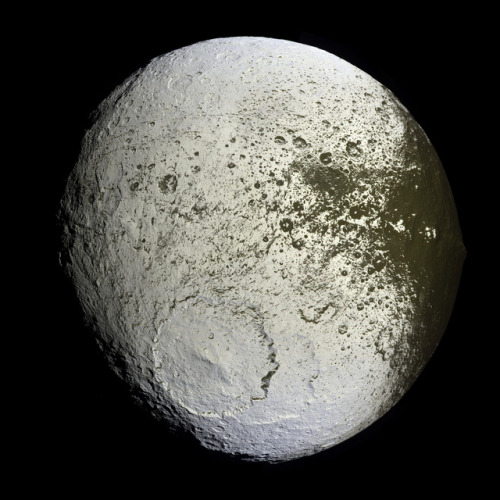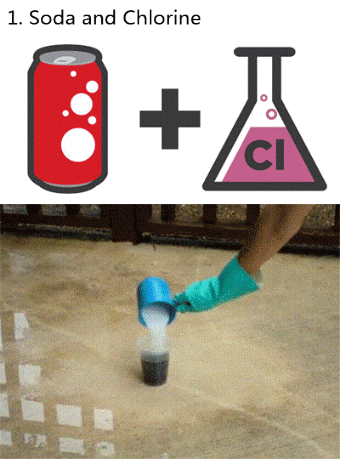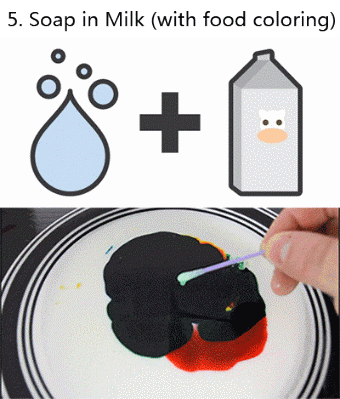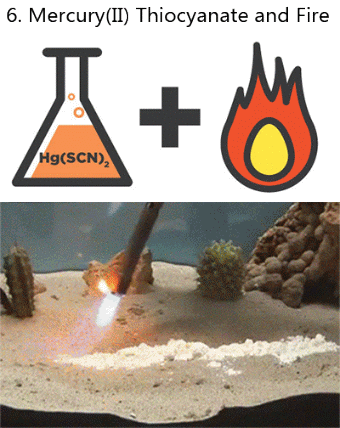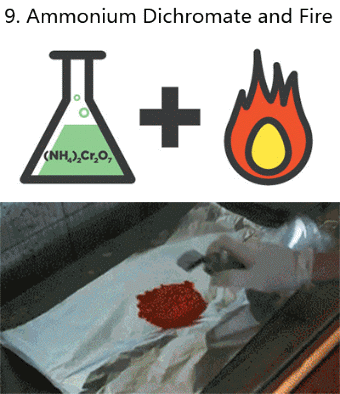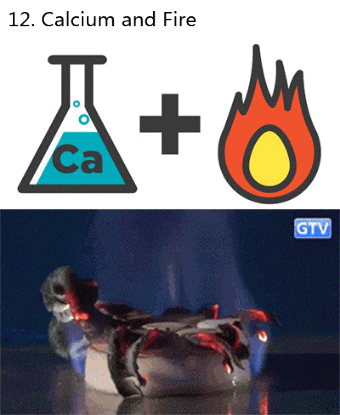Researchers Have Designed A New Material That Could Completely Revolutionize The Way Oil Spills Are Cleaned

Researchers have designed a new material that could completely revolutionize the way oil spills are cleaned up.
When the Deepwater Horizon spill happened in 2010, the cleanup presented an unexpected challenge. Millions of gallons of oil didn’t collect on the surface, where it could be skimmed off or burned, but instead was drifting through the ocean below the waves.
Scientists at the U.S. Department of Energy’s Argonne National Lab have invented a material that could prevent a similar situation in future spills.
The foam, called Oleo Sponge, can soak up 90 times its own weight in oil before it needs to be wrung out to be reused — and the oil can be recovered.
Continue Reading.
More Posts from Drunkscience4u and Others

The Juno mission has been revealing angles of Jupiter we’ve never seen before. This photo shows Jupiter’s northern temperate latitudes and NN-LRS-1, a.k.a. the Little Red Spot (lower left), the third largest anticyclone on Jupiter. The Little Red Spot is a storm roughly the size of the Earth and was first observed in 1993. As an anticyclone, it has large-scale rotation around a core of high pressure and rotates in a clockwise direction since it is in the northern hemisphere. Jupiter’s anticyclones seem to be powered by merging with other storms; in 1998, the Little Red Spot merged with three other storms that had existed for decades. (Image credit: NASA/JPL-Caltech/SwRI/MSSS/Gerald Eichstaedt/John Rogers; via Bad Astronomy)
Please subscribe, like, comment, and donate! Next (and last) episode April 15, 2017. Stay tuned for Bloopers from this episode on April 8, 2017. Starring: Candice Lola Directed by Rebecca Berger Produced by Rebecca Berger and Candice Lola Written by Candice Lola Editing, Color, Sound Design by Rebecca Berger Animation by Rachael K McDonald Links: Music: http://ift.tt/1JICaNj and http://ift.tt/2lquxdO http://ift.tt/2lINlQJ http://ift.tt/2lqtjzr http://ift.tt/2lIL08B http://ift.tt/2lqvuCQ (Donations are always welcome!) http://ift.tt/2lITyw7 http://ift.tt/2lqvQJO
This, and other precious gems, available via the link in the bio. #science #bloopers #funny #stem #blerd http://ift.tt/2oQXTmH
Largest Batch of Earth-size, Habitable Zone Planets
Our Spitzer Space Telescope has revealed the first known system of seven Earth-size planets around a single star. Three of these planets are firmly located in an area called the habitable zone, where liquid water is most likely to exist on a rocky planet.

This exoplanet system is called TRAPPIST-1, named for The Transiting Planets and Planetesimals Small Telescope (TRAPPIST) in Chile. In May 2016, researchers using TRAPPIST announced they had discovered three planets in the system.

Assisted by several ground-based telescopes, Spitzer confirmed the existence of two of these planets and discovered five additional ones, increasing the number of known planets in the system to seven.

This is the FIRST time three terrestrial planets have been found in the habitable zone of a star, and this is the FIRST time we have been able to measure both the masses and the radius for habitable zone Earth-sized planets.
All of these seven planets could have liquid water, key to life as we know it, under the right atmospheric conditions, but the chances are highest with the three in the habitable zone.

At about 40 light-years (235 trillion miles) from Earth, the system of planets is relatively close to us, in the constellation Aquarius. Because they are located outside of our solar system, these planets are scientifically known as exoplanets. To clarify, exoplanets are planets outside our solar system that orbit a sun-like star.

In this animation, you can see the planets orbiting the star, with the green area representing the famous habitable zone, defined as the range of distance to the star for which an Earth-like planet is the most likely to harbor abundant liquid water on its surface. Planets e, f and g fall in the habitable zone of the star.
Using Spitzer data, the team precisely measured the sizes of the seven planets and developed first estimates of the masses of six of them. The mass of the seventh and farthest exoplanet has not yet been estimated.

For comparison…if our sun was the size of a basketball, the TRAPPIST-1 star would be the size of a golf ball.
Based on their densities, all of the TRAPPIST-1 planets are likely to be rocky. Further observations will not only help determine whether they are rich in water, but also possibly reveal whether any could have liquid water on their surfaces.
The sun at the center of this system is classified as an ultra-cool dwarf and is so cool that liquid water could survive on planets orbiting very close to it, closer than is possible on planets in our solar system. All seven of the TRAPPIST-1 planetary orbits are closer to their host star than Mercury is to our sun.

The planets also are very close to each other. How close? Well, if a person was standing on one of the planet’s surface, they could gaze up and potentially see geological features or clouds of neighboring worlds, which would sometimes appear larger than the moon in Earth’s sky.

The planets may also be tidally-locked to their star, which means the same side of the planet is always facing the star, therefore each side is either perpetual day or night. This could mean they have weather patterns totally unlike those on Earth, such as strong wind blowing from the day side to the night side, and extreme temperature changes.

Because most TRAPPIST-1 planets are likely to be rocky, and they are very close to one another, scientists view the Galilean moons of Jupiter – lo, Europa, Callisto, Ganymede – as good comparisons in our solar system. All of these moons are also tidally locked to Jupiter. The TRAPPIST-1 star is only slightly wider than Jupiter, yet much warmer.
How Did the Spitzer Space Telescope Detect this System?
Spitzer, an infrared telescope that trails Earth as it orbits the sun, was well-suited for studying TRAPPIST-1 because the star glows brightest in infrared light, whose wavelengths are longer than the eye can see. Spitzer is uniquely positioned in its orbit to observe enough crossing (aka transits) of the planets in front of the host star to reveal the complex architecture of the system.

Every time a planet passes by, or transits, a star, it blocks out some light. Spitzer measured the dips in light and based on how big the dip, you can determine the size of the planet. The timing of the transits tells you how long it takes for the planet to orbit the star.

The TRAPPIST-1 system provides one of the best opportunities in the next decade to study the atmospheres around Earth-size planets. Spitzer, Hubble and Kepler will help astronomers plan for follow-up studies using our upcoming James Webb Space Telescope, launching in 2018. With much greater sensitivity, Webb will be able to detect the chemical fingerprints of water, methane, oxygen, ozone and other components of a planet’s atmosphere.
At 40 light-years away, humans won’t be visiting this system in person anytime soon…that said…this poster can help us imagine what it would be like:

Make sure to follow us on Tumblr for your regular dose of space: http://nasa.tumblr.com
Please subscribe, like, comment, and donate! Next episode March 18. 2017. Starring: Candice Lola Directed by Rebecca Berger Produced by Rebecca Berger and Candice Lola Written by Candice Lola Editing, Color, Sound Design by Rebecca Berger Animation by Rachael K McDonald Links: Music: http://ift.tt/1JICaNj and http://ift.tt/2lquxdO http://ift.tt/2lINlQJ http://ift.tt/2lqtjzr http://ift.tt/2lIL08B http://ift.tt/2lqvuCQ (Donations are always welcome!) http://ift.tt/2lITyw7 http://ift.tt/2lqvQJO
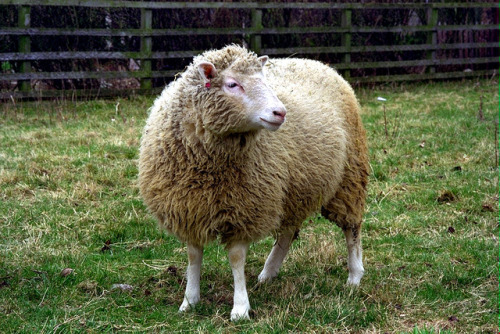
Dolly at 20
Twenty years ago today on February 22, 1997, Ian Wilmut, Keith Campbell and colleagues at the Roslin Institute, announced the existence of a 7 month old sheep named Dolly, the product of cloning. She was cloned using and adult cell and born on July, 5, 1996 and raised under the auspices of the UK Ministry of Agriculture and Scottish company PPL Therapeutics. A Dorset Finn sheep, Dolly lived for six and half years before she was euthanized due to illness. Dolly was created with a process called somatic cell nuclear transfer, in which a donor cell (in this case and adult cell from another sheep) has the nucleus removed that is then transfered into an unfertilized egg cell (an oocyte) which in turn has had its cell nucleus removed to make way for the donor nucleus. The host cell is then stimulated and implanted into a host sheep for gestation. Although other animals had been cloned before Dolly, Dolly is celebrated as the first ‘clone’ because her donor cell came from an adult cell.

The word clone entered English as a noun used in botany in 1903 from the Ancient Greek word klon (κλον) meaning a twig or spray, related to klados (κλαδος) meaning a sprout, young offshoot, branch. Botanists used the word to describe the results of the techique of grafting a shoot of one plant or tree onto another. The word clone (verb) wasn’t used until 1959, and it wasn’t until the 1970s that clone was used in connnection with animals and humans. Since Dolly, scientists have successfully cloned many other animals, including pigs, horses, goats, and deer.
Image of ‘v’ graft courtesy ghadjikyriacou, via flickr, used with permission under a Creative Commons 3.0 license.
-
 klutris reblogged this · 8 years ago
klutris reblogged this · 8 years ago -
 himinmin reblogged this · 8 years ago
himinmin reblogged this · 8 years ago -
 gwkimmy liked this · 8 years ago
gwkimmy liked this · 8 years ago -
 nyxqueen97 reblogged this · 8 years ago
nyxqueen97 reblogged this · 8 years ago -
 esfinleo liked this · 8 years ago
esfinleo liked this · 8 years ago -
 anarchotranssexualism liked this · 8 years ago
anarchotranssexualism liked this · 8 years ago -
 saotome-michi reblogged this · 8 years ago
saotome-michi reblogged this · 8 years ago -
 g-a-y-g-o-y-l-e reblogged this · 8 years ago
g-a-y-g-o-y-l-e reblogged this · 8 years ago -
 g-a-y-g-o-y-l-e liked this · 8 years ago
g-a-y-g-o-y-l-e liked this · 8 years ago -
 drunkscience4u reblogged this · 8 years ago
drunkscience4u reblogged this · 8 years ago -
 thetimetravellingscientist-blog1 reblogged this · 8 years ago
thetimetravellingscientist-blog1 reblogged this · 8 years ago -
 the-darklington liked this · 8 years ago
the-darklington liked this · 8 years ago -
 most-definitely-human reblogged this · 8 years ago
most-definitely-human reblogged this · 8 years ago -
 homeless-cosmonaut reblogged this · 8 years ago
homeless-cosmonaut reblogged this · 8 years ago -
 tooney712 liked this · 8 years ago
tooney712 liked this · 8 years ago -
 error-320 liked this · 8 years ago
error-320 liked this · 8 years ago -
 kapuchino357 reblogged this · 8 years ago
kapuchino357 reblogged this · 8 years ago -
 tiger5984 liked this · 8 years ago
tiger5984 liked this · 8 years ago -
 dragonengine reblogged this · 8 years ago
dragonengine reblogged this · 8 years ago -
 beckernyms reblogged this · 8 years ago
beckernyms reblogged this · 8 years ago -
 arielxlazarus reblogged this · 8 years ago
arielxlazarus reblogged this · 8 years ago -
 end-of-the-rabbithole reblogged this · 8 years ago
end-of-the-rabbithole reblogged this · 8 years ago -
 end-of-the-rabbithole liked this · 8 years ago
end-of-the-rabbithole liked this · 8 years ago -
 mrs-pants47 liked this · 8 years ago
mrs-pants47 liked this · 8 years ago -
 tumbleweed-chaser liked this · 8 years ago
tumbleweed-chaser liked this · 8 years ago -
 urbanoceanix reblogged this · 8 years ago
urbanoceanix reblogged this · 8 years ago -
 cmagen liked this · 8 years ago
cmagen liked this · 8 years ago -
 king-of-the-aces liked this · 8 years ago
king-of-the-aces liked this · 8 years ago -
 romulousofatlantis reblogged this · 8 years ago
romulousofatlantis reblogged this · 8 years ago -
 liobits reblogged this · 8 years ago
liobits reblogged this · 8 years ago -
 todd-the-foxx liked this · 8 years ago
todd-the-foxx liked this · 8 years ago -
 devourer-of-acetone reblogged this · 8 years ago
devourer-of-acetone reblogged this · 8 years ago -
 reticentrhino reblogged this · 8 years ago
reticentrhino reblogged this · 8 years ago -
 blueinksplotch reblogged this · 8 years ago
blueinksplotch reblogged this · 8 years ago -
 blueinksplotch liked this · 8 years ago
blueinksplotch liked this · 8 years ago
The official page of Drunk Science! An enthusiastic host performs simple experiments and then humorously explains the science behind the result, all while visibly drunk.
126 posts
